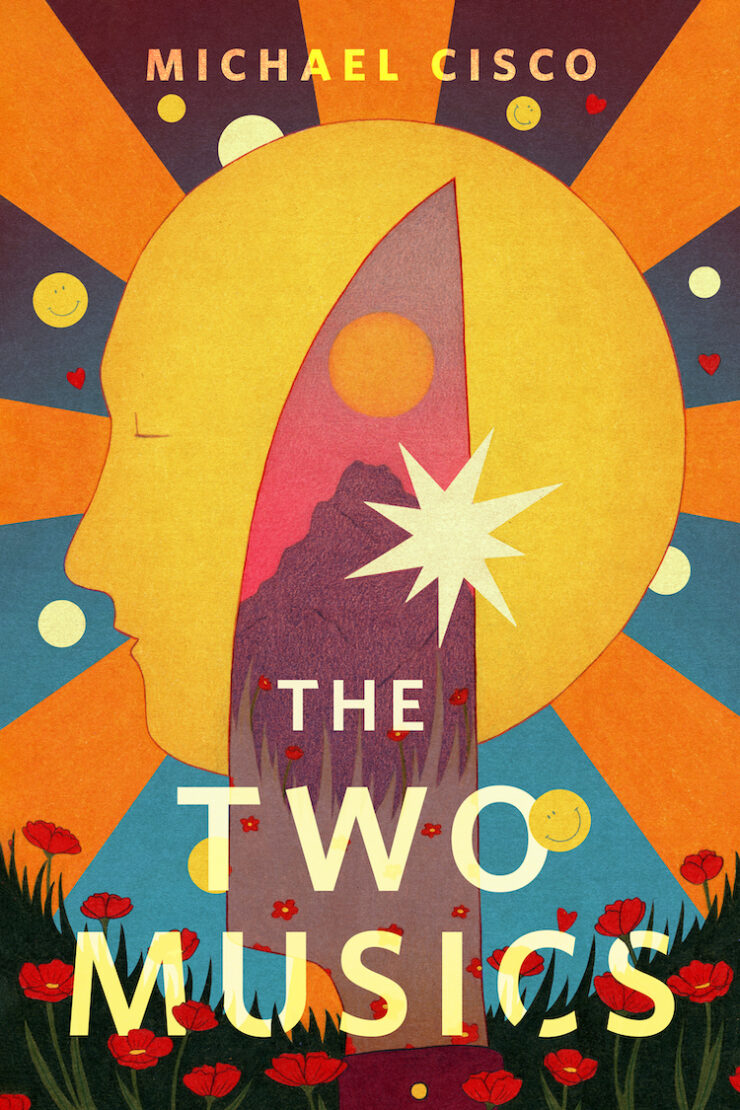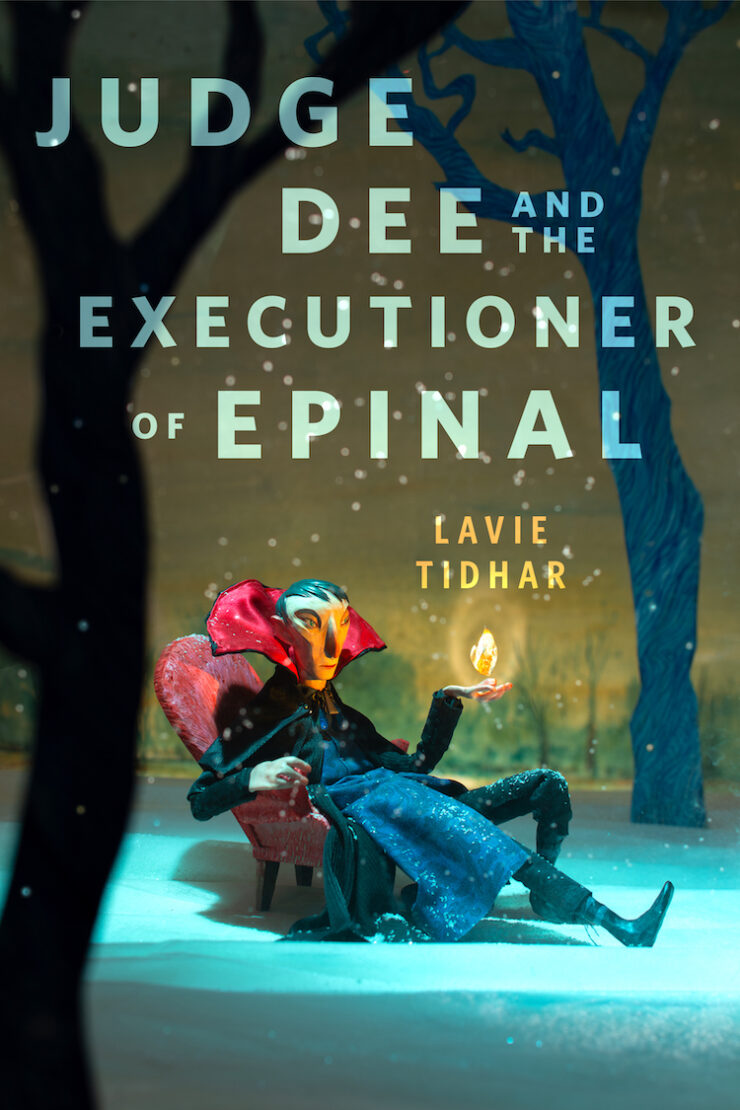I cried. Buckets. Not stoic, noble, dignified tears, either. I’m talking snot-drippage and heaving. I’m talking the kind of crying kids do, because they’re, like, four and they don’t know what else to do with themselves. It was worse because I was alone, watching “The Angels Take Manhattan” at 3am on Amazon.com, because I couldn’t watch the broadcast earlier in the day. So, I was heave-sobbing all alone in my room as I watched the Doctor heave-sob over the departure of Amy and Rory.
Damn you, Moffat.

New York in the 1930s, a P.I. is hired for a strange case. A collector of rarities by the name of Grayle hires him to investigate statues that move… which is ridiculous, of course. Except that those statues are Weeping Angels, and that P.I. ends up getting sucked into their time energy farm in the Winter Quay building. Meanwhile, the Doctor, Amy, and Rory are hanging out in present-day New York enjoying a day in Central Park; a day that gets shot to hell when Rory goes for coffee and gets sucked back into New York’s past, to the Winter Quay, with the Doctor and Amy precariously following in the TARDIS. There, they find River Song, who’s replaced the now-missing P.I. in Grayle’s investigation. Amy finds Rory, and they all find Old Rory, who’s lived out his life without Amy in that building, a prisoner of the Weeping Angels.
They figure out that the Winter Quay building is, and decide that they want to save Rory by attempting to run. When that fails, Rory decides to jump off the building, with the notion that if he dies there, and not as an old man, he’ll cause a paradox that will destroy the Winter Quay and the Angels, and possibly save him. Amy, not able to bear life without him, decides to jump too. They collapse the Winter Quay timeline and end up back in the cemetery where they started. However, as they, the Doctor, and River plan a family outing at the pub, Rory is sucked back in time by a surviving Weeping Angel. Devastated, Amy does the only thing she can do, deciding (like she did in “Amy’s Choice”) that she’d sacrifice the certainty of a life lived without Rory for the slight possibility of being able to live out her life with him. With a tearful farewell, she tells River/Melody to “be a good girl” and take care of the Doctor, bids her Raggedy Man goodbye, and let’s the Angel take her to Rory. We learn in an afterward Amy writes for a book that River/Melody publishes, that (in addition to Amy apparently becoming an editor or publisher) Amy and Rory had a happy life together. Amy tells the Doctor that she and Rory love him very much, and she warns him to never travel alone. Lastly, she asks the Doctor to tell Young Amelia Pond the story of herself; the woman she will become, the man she will love, and the adventures she’ll have.

Steven Moffat has never really solidified the rules of the Weeping Angels properly, and is generally too timey-wimey for his own good (he did introduce that phrase in “Blink,” after all). Granted, humanity isn’t consistent either, and rules always have exceptions, but things that the Angels are capable of physically should always be consistent, or be properly explained when they’re not. Here’s what didn’t work:

- The Statue of Liberty could never be a Weeping Angel. While that was definitely a cool, fun thing to see, too many people are looking at the Statue of Liberty all the time: planes, boats, people passing in cars on bridges, or looking out their apartment windows. If the Statue of Liberty were a Weeping Angel, it would never move. Certainly not up to a building! And once it’s there? No one notices that the Statue of Liberty is UP AGAINST A BUILDING? That’s not front-page news the next day?
- For that matter, Weeping Angels in big cities, particularly populous cities in small spaces like New York, don’t make sense. Yes, there are lots of statues amongst which they can hide, but there are also too many eyes. It doesn’t make sense for the Angels to choose to go there at all, let alone set up a farm. Yes, plenty of people from whom they can suck time energy, but they’d never be able to move long enough to do anything about it.

- Nick Hurran’s direction of this episode not only contradicted a million Weeping Angel rules, but in doing so took me out of otherwise amazing, emotional moments. The scene with Rory and Amy on the roof comes to mind. Rory looks away from the Statue of Liberty to talk to Amy in a touching moment, and while I was able to rationalize that away because of the point above about a statue like that always having eyes on it (and so it really shouldn’t have been able to get there in the first place), the fact is that I had to stop and think about that when I should have been fully engaged in that beautiful moment between husband and wife. It would have been a much more powerful choice to direct scenes like that less carelessly, making sure that Rory didn’t and couldn’t look away from the Angel and forcing him to express his deep, profound feelings without being able to make eye contact.
- Can’t land the TARDIS in New York, because there’s time distortions? And even when the TARDIS can land, there’s always the possibility of tearing New York apart? Really? Because the Doctor has totally been there before. Several times. In fact, even in this episode, after the Doctor says he can’t go back to New York… he goes back to New York to get Amy’s last page.
- How exactly did River break her own wrist without blinking (and, while she was at it, cringing in pain)? She was alone with an Angel. She should have been zapped back in time. Also, the Doctor already went against what he heard in the book by telling River to escape the Angel’s grasp without breaking her wrist and without breaking it himself. So, why didn’t they just break the Angel’s wrist again?
So, with all this inconsistency with Weeping Angel rules and time travel rules, why was this episode ultimately satisfying to me? Because the most important thing that needed to be consistent for me were the characters. It was well-publicized that this episode would be the last for Amy and Rory. The story could’ve been about anything. My primary concern was: Will Amy and Rory leave the show in a way that is worthy of them and is true to their characters? “The Angels Take Manhattan” gave them a worthy exit, and gave us deeper insight not just into Amy and Rory, but into all the characters’ relationships with each other.

Amy and Rory have always been an amazing couple, and over their three seasons on the show, we’ve gotten to watch them grow into each other and into what marriage means for them. Remember when Amy was running from marrying Rory, unsure she was able to handle being a Mrs.? Remember when Rory was threatened by how Amy felt about the Doctor? It’s hard to imagine that the strong, assured couple we see in “The Angels Take Manhattan” was ever once just those insecure, jittery people who couldn’t handle their love for each other, but they were, and this episode was a lovely payoff after years of watching them grow up. Their being so selfless with and for each other both in small ways (Rory not wanting to point out the lines around Amy’s eyes) and in huge ways (being willing to die for and with each other so as not to be apart), and their ease with being vulnerable around each other (Rory not hiding his fear of dying, Amy not hiding her fear of losing him) can be summed up in Amy’s line to Rory, “That’s marriage.” At least, it’s what marriage should be – two people who can be at their strongest and their weakest with each other knowing it’s okay, because they are loved. We got Amy and Rory Williams at their best in this episode.

The Doctor and Amy had a close-knit relationship from the start. Unlike other companions where each was merely a stop on the others’ journey, Amy and the Doctor started their relationship when they were each only starting to bloom. Amy was the “first face [the Doctor’s] face saw” when he regenerated for the eleventh time, and the Doctor came into Amy’s life when she was only a child. They’ve helped and watched each other grow up, and it was touching to watch the end of their relationship in the context of the Doctor hating endings. Having Amy need reading glasses and having lines around her eyes was poignant, because of they served as a reminder that Amy is aging and will one day no longer be there for him. It was understandable that, while with other companions he might have been a little better about holding it together upon their departure, allowing them to go (sometimes forcing them to go against their will) nobly for “their own good,” he just couldn’t do it with Amy and he broke down. Having Amy leave him with the words “Raggedy Man, goodbye” was an amazing moment, as it was the perfect culmination of everything she’d ever felt and been through with the Doctor. She was at her most mature and bidding her “imaginary friend” goodbye.

We also got an interesting look at the Doctor and River as a married couple. Granted, their marriage is a lot less conventional than Amy and Rory’s, but there is no doubt that they love each other deeply, and it was an interesting contrast watching their marriage juxtaposed with that of River’s parents. There was a similar show of being selfless with and for each other (River not telling him about breaking her wrist, the Doctor using his regeneration energy to heal her) as well as a mutual showing of vulnerability, but it was appropriate to their characters as they are each less comfortable than Amy and Rory at being in a relationship with anyone. Their marriage is unconventional mostly because they are two people who should never be married, and they can only be in a marriage with someone similarly emotionally handicapped. It’s weird, but it works for them. It’s the only thing that can.
Baby Angels totally play into my fear/hatred of singing children in horror movies. I wasn’t particularly scared of the adult Angels in this, but the laughing and pitter-pattering of the baby ones? *shudders* They gave me new reason to be afraid. Ugh.
The performances of the main cast were brilliant in this episode. Matt Smith, Karen Gillan, and Arthur Darvill were completely unguarded and raw in this, and it was amazing to watch. Their chemistry as a foursome along with Alex Kingston as River was wonderful, too, and it’s a shame that we won’t get to ever watch them have that family outing. Gillan makes a powerful young mother. Kingston makes an intriguing older daughter. Smith and Darvill make an amazing father and son-in-law. They were a great team.

Despite its timey-wimey flaws, “The Angels Take Manhattan” was ultimately successful in getting the important stuff right. It did the characters justice, and allowed each of them to go on in an honorable way. I was concerned when I heard that Moffat planned a tear-jerker, anticipating a cheap death. However, having Amy and Rory essentially “die” in this timeline, but continue to live out a happy life together elsewhere anyway was the perfect way to let them go. They have always struggled with the choice of staying with the Doctor or living their mundane lives. Amy and Rory got to have both, and they got to have it by choice. So often, the Doctor thinks he gets to decide what’s best for his companions. It’s powerful to see companions leading their lives on their own terms, and Amelia Pond got an amazing ending to her story; one that seven-year-old her can be proud.
Well, that’s it for a couple of months! Come back shortly after Christmas where I’ll be right here talking about the Doctor Who Christmas special and the introduction of the Doctor’s new companion!
Teresa Jusino will miss the Pond-Williamses very, very much. Her Feminist Brown Person take on pop culture has been featured on websites like GirlGamer.com, Al Dia, ChinaShopMag.com, PinkRaygun.com, Newsarama, and PopMatters.com. November 2012 will see Teresa’s work in two upcoming Doctor Who anthologies, Chicks Unravel Time (Mad Norwegian Press) and Outside In (ATB Publishing). She is also a writer/producer on Miley Yamamoto’s upcoming sci-fi web series, RETCON, which is set to debut in 2013. For more on her writing, get Twitterpated with Teresa, “like” her on Facebook, or visit her at The Teresa Jusino Experience.









